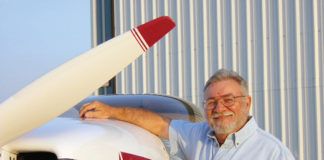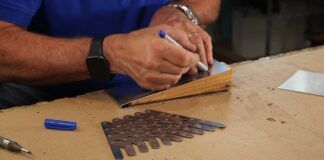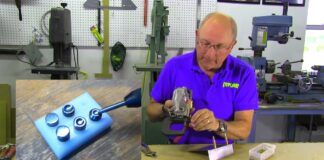Rarely does a column trigger as much discourse as did Tim Kerns Engine Beat report on the Hexadyne P60 (Four Strokes, Small Package, KITPLANES, October 2006). After that column appeared, we received reader feedback that made us suspect that all was not well in the world of the P60.
Based on these contacts, it made sense to us to follow up on these claims and to fill out the picture of the engines development. As mentioned in the column, at the time, customer flight data were scarce. Hexadynes Cy Williams said that test data were pretty much what we expected. One must place that statement in context with the fact that the sole airplane performing flight testing had experienced problems.
Fred Parker, who was performing flight testing of the SkyRaider test aircraft, described instances of power loss, overheating and the engines inability to retain oil. I had to put it down once, he told us, when the gaskets blew [forcing oil out of the engine.] I had to put it down [another time] in a pumpkin field. Early difficulties with a new engine during flight test are not, in our experience, unusual. What is, in our view, is the breakdown in communications between Williams and Parker. Parker claims that he was left with little documentation on the engine and no recommendations on how to fly it, specifically any time-at-power limitations. Williams contends that Parker was made aware of a 4-minute maximum-power limitation but admits that it is not written anywhere. (We asked for copies of a users manual but were told one is still in development.)
Another builder, Mike Robbins, who was installing a P60 in his own biplane design as well as a customers AirTrike, says that he found a host of problems with the engine. The oil system will not remove the oil from the crankcase fast enough and the crank foams the oil that is trapped in the case, he claims. Foamed oil will not pass through a scavenger pump. Bypass gasses build up (along with the foamed oil) and the gaskets blow because the crankcase is sealed without a vent. I had to design a case breather/oil separator/oil return to keep the oil in the engine and to return surplus oil to the reservoir. I had to machine the oil pressure bypass piston to keep it from sticking in its bore and blowing up the oil filter. I had to manufacture a new starter system for the engine to keep the debris from the Bendix teeth from going through the crankcase oil.
Williams responds by saying that changes have been made to the oiling system as a result of reports of oil leaving the crankcase due to insufficient scavenging. He also says improper oil level/component placement have been investigated and addressed. The factory has, after Robbins experience, re-engineered the component placements and capacities. Williams claims to have solved the lubrication problem by making a system-wide change in the way the oil is scavenged from the engine and returned to the reservoir tank. This involved increasing the size of the exit oil ports, increasing the size of all oil fittings, oil lines and oil cooler. Williams says that All engines under warranty have been modified with the latest improvements at no cost to the customers.
Robbins had other issues, including the inability to make one of the two engines hes installing start at all. He believes he found the problem with the offending engine when the camshaft ignition trigger was not located at top-dead center of the piston stroke. (This is the common way to index an ignition sensor, but not the only way, as well see.) Robbins says that The fuel injection system would not work in a reliable manner so I removed it and replaced it with dual carbs. I built a GM-based ignition system for the engine. He did get it running, but not to his satisfaction and removed it before committing a first flight.
Williams responds by saying that the ignition sensor does not have to be (and is not) located at TDC, but that the computer compensates for the difference. (Robbins was unaware that the sensor was intentionally not at TDC in part because there was no documentation that said it should be.) Each engine, Williams says, is run at the factory and married to a specific Engine Control Unit computer that manages spark and fuel injection. Testing on the dyno ensures that the correct offset is loaded into the computer so that ignition and fuel timing are correct.
According to Williams, a supplier-generated manual for the electronics does exist, but has never been shipped to customers. Williams says hes going to include this manual with future engine shipments. The problem remains, though, that there is no way for the owner to determine when an ignition event is taking place. There is no sight glass, no external flywheel mark; and the geared engines prop hub is in a different place at each revolution, so a mark on the prop hub would be useful only once every several revolutions, with no way for a gifted amateur to tell which one.
Nothing can happen until the harness is shipped, and Hexadynes policy has been to ship the harness only when the engine has been mounted, so that the right length harness can then be supplied. Williams told us, We have three standard harnesses-A, B, and C. The ECU is assigned to that engine; it is the same exact ECU that is used on the test stand. When we get the information, we send the harness and the ECU and the PCU (a small unit on the control panel, with some switches-cold start, mixture). The mixture adjustment is very small. The main work is done by the map itself.
As a result of our conversations, Williams is open to the idea of sending the mid-length harness (harness B) with the engine; if the customer then needs longer or shorter, he will swap with the factory, rather than modifying the harness.
Williams told us in an interview November 3 that hes going to do everything he can to make everything right. He says, Any customer may return any unmodified, non-disassembled engine to the factory right now. Williams will add all improvements, test-run the engine, and provide a new-engine warranty. Shipping to the factory will be at the customers expense, but the engine will be returned freight prepaid.
Bottom line: This engine has had documented early problems-and to be fair to Williams, its worth noting that virtually every new engine design goes through just this process. It usually only happens behind closed doors, and usually on aircraft owned by or contracted to the engine company. Williams claims that the problems so far brought to light have been or are being addressed. As this is written, no Hexadyne P60 is flying. With so little fleet time-one could argue that there has been virtually no usable fleet experience so far-we feel this engine should not be considered as well developed or reliable as comparable engines with fleet experience.













